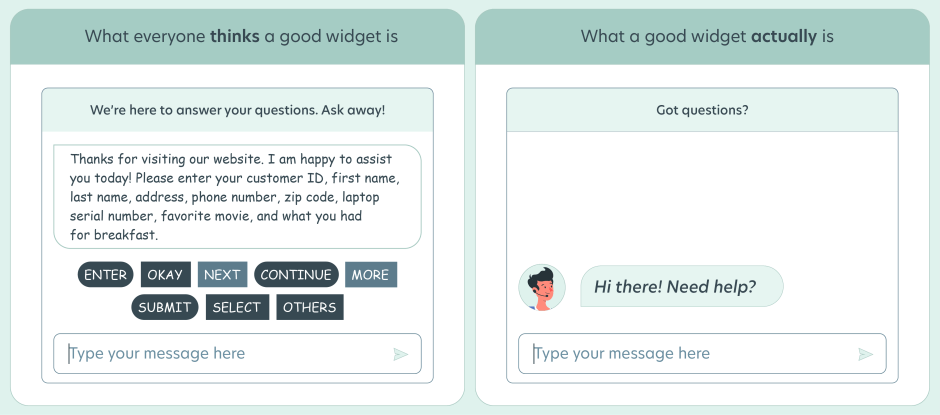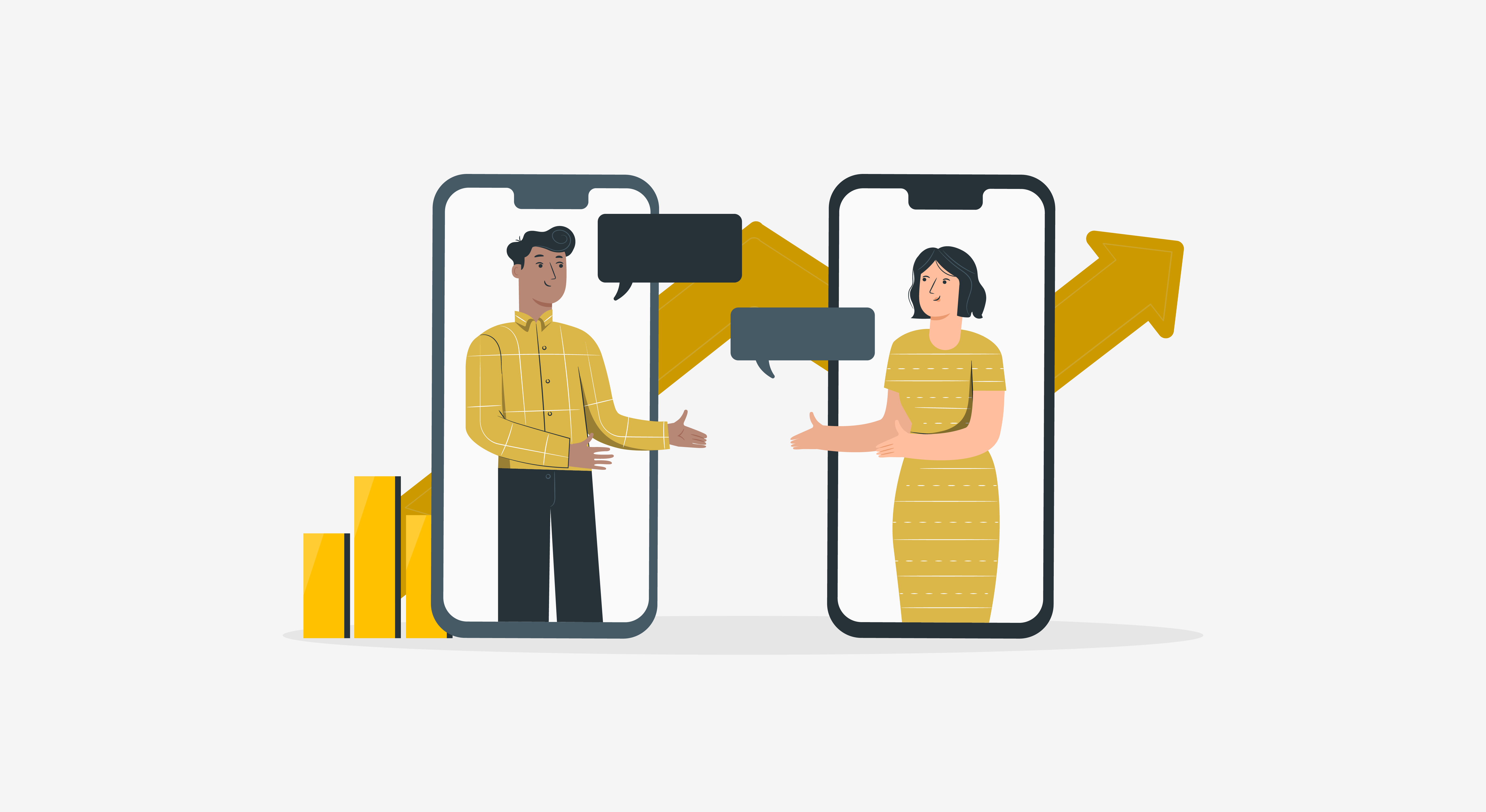Over the years, live chat has transformed from an additional support channel tackling website requests to one of the most efficient resolution channels with the highest consumer satisfaction rate at 92%. The rise of live chat can be attributed to the increasing demand for meaningful, quick chat support but with personalization, a combination live chat has managed to achieve.
The Need to Implement Live Chat Seamlessly
With no-code live chat builders, ready-to-go interfaces, and simple integration options, any business can set up live chat in minutes. But why it’s not everyone who is reaping the aforementioned benefits but a specific few? The answer is, if you haven’t reached the optimum level of live chat benefits, perhaps you need to rethink your implementation strategy. Implementing live chat seamlessly is equally important as having proficient live chat agents and a convenient user interface.
Implementation Steps to Ensure Live Chat Success
1. Build Individual Workflows for Each Customer-facing Team
You need purpose-built workflows for everyone likely to use live chat for customer interaction. Most companies create a fail-proof workflow for customer support and wing other interactions with the same workflow which doesn’t work. Some steps are common, like configuration and integration with the right platforms. When you configure live chat:
- Map the number of agents in a team and the number of chats likely to be initiated
- Define rules for live chat routing to ensure the tickets reach the right agent
- Adopt queue management best practices for even distribution of chats to agents
When you integrate live chat with other tools and platforms, enable integrations that serve the unique purpose of each team. Look at some examples of what you can do differently for each customer-facing team:
- Customer Support: Integration with the knowledge base to add quick references, and with the ticketing system to transfer chats to the right agents
- Marketing: Integration with CRM to get context about customer needs and purchase history to communicate better
- Sales: Integration with payment gateway options to enable quick payment decisions
In essence, build workflows that make work easier for your teams and serve them in their goals. For best results, work with your team members to understand their bottlenecks and work backward with live chat to meet the desired outcomes.
2. Define Your Key Performance Indicators
Just as any other support channel, live chat needs to be measured to ensure continued success. Setting up key performance metrics or KPIs will also help you understand what more to do with live chat, and if there are bottlenecks that need immediate attention. To make things simple, you can start with the three stakeholders of live chat and what they expect out of live chat.
Customers:
- Customer Satisfaction Score (CSAT) and Net Promoter Score (NPS) to measure customer satisfaction after live chat interaction or resolution
- Chat Abandonment Rate to measure the effectiveness of live chat placement and engagement
Agents:
- Support agents: Average Wait Time and Average Response Time to measure live chat support times against industry standards
- Marketing agents: Conversion Rate and Cart Abandonment rate to measure live chat effectiveness in lead management and nurturing
- Sales agents: Conversion Rate, Average Order Value, and Up-sell Percentage to measure chat to conversion rate and keep likely intrusiveness in check
Business:
- Cost-to-build and maintenance expense to measure the cost-effectiveness of live chat
- Revenue via Live Chat and Satisfaction Rate to measure live chat customer experience and bottom-line impact over time
3. Design a Powerful User Interface
For live chat users, the chat widget is the face of your business. The opinions customers form about you will largely depend on this one-touch experience with your teams. You need a chat widget that is powerful yet simple, feature-rich yet uncomplicated, casual yet professional. You can approach design from three different viewpoints.

Design: While you may like to create innovative live chat designs, customers want a straightforward chat widget they can navigate easily. In this case, customers value experience more than look and feel. Stick with designs your customers are accustomed to so that they could go with the flow and have an effortless experience. Never load the chat window with features. The best live chat widget is the one that’s most simple, with minimalistic layouts and chat buttons.
Content: Live chat best practices include content advocacy as one of the primary factors. Content doesn’t just refer to agent responses. The widget copy, the canned response text, the pop-up text, are all part of live chat content. The key is to use content that resonates with your users and captures your brand persona in its tonality. Finally, keep it simple – “Sign up” is better than “Start your journey”.
Functionality: Functionality here refers to the plan of action. Assess your customers’ issues initiated on chat and the time of initiation to devise the best action plan to accommodate the requests. You can complement your live chat solution further with options to reach a human agent directly, Chatbots to cover non-working hours of agents, and self-service integration to encourage customers to help themselves.
Live chat users are by nature looking for quick real-time solutions with as little effort as possible. As a rule of thumb, keep your live chat interface simple. Use A/B testing to identify what works and weed out the miscalculations. Finally, make your live chat tool mobile-responsive. With mobile phones contributing to 50% of the world’s web traffic, you can’t overlook the need for mobile user experience anymore.
4. Train Live Chat Agents
Agents could make good experiences great and worst experiences tolerable. Guide your agents in the right direction with frequent training sessions and best practices. Even if your live chat is loaded with productivity enhancements like integration and automation, if your agents don’t know how to use it, they won’t use it. Live chat is basically a continuous stream of messages that won’t go off. You need to keep an eye on it — messages could get queued, agents could get bogged down with requests, chat experience could weaken.
The answer for every problem is looking for live chat features that enable agents to work hassle-free and maintain productivity. There is automation to initiate auto assignments and routing. There are Chatbots and Knowledge Bases to handle elemental faq questions. Train your support team to use them in their chat sessions. You will see subsequent results in the form of increased quality of support and meaningful support experiences.
5. Create a Proactive Messaging Plan
Live chat is the current best medium for proactive customer engagement. Proactive chat messaging refers to a brand’s efforts to engage a targeted customer base before they contact the brand. In a competitive marketplace, proactive messaging can give you the edge you need to influence your customers’ purchase decisions and build mutually beneficial relationships. There are other less effective options — engagement on Social media messengers which could be counted as promotions and drip emails which could be counted as spam, leaving you with live chat — a more successful option.

You can create chat scripts to encourage website visitors to try your products and services, an existing customer to upgrade the plan, or a new customer to rethink the abandoned shopping cart. The more you follow up and gain context, the better the success of your proactive marketing will be. You can segment your target audiences such as return customers and new customers, frequent buyers and cart abandoners, or low-velocity (ex: E-commerce customer) and high-velocity (ex: Laptop buyer) customers. You can’t target an e-commerce customer and a laptop buyer with the same messaging. One would purchase frequently but need less assistance whereas the other would purchase infrequently but need more help. Take these factors into account.
Thumb Rule of Successful Live Chat Implementation
The success of a live chat channel depends on how well you align your live chat goals and execution. Live chat as part of your support strategy is supposed to benefit your customers, customer service agents, and your business, in very unique ways. Your customers need a resolution channel where they can get quick answers. Your service agents need a channel that can help them solve customer problems quickly without losing productivity. Then comes your business, which will reap the benefits of a cost-effective resolution method that doesn’t place a strain on service quality and budget.
In the long term, empathetic live chat conversations also help the sales team increase sales and conversion, giving your business further something to take to the bank. All of these are products of successful live chat implementation.
Successful Implementation is a Deal-breaker in Live Chat
The benefits of live chat, if implemented right, will be largely enhanced. Follow customer expectations and feedback with pre-chat and post-chat surveys to make further improvements to your live chat implementation. But the good news is, with a good amount of understanding about your customers, agents, and business, you will be able to shift live chat up to the highest gear.
Or, book a free trial with HappyFox Chat to see how live chat works first hand. HappyFox live chat software offers easy deployment, external integrations, and the crowd favorite, unlimited agents on all pricing plans.








